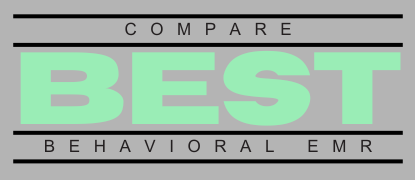
Let’s face it, running a trauma therapy practice is already challenging enough without wrestling daily with clunky, confusing EMR software. If you’re like me, you’ve probably had your share of battles with systems that seem designed by people who’ve never actually sat in front of a patient. Choosing the right EMR for trauma therapy isn’t just about ticking boxes; it’s about finding software that genuinely fits your workflow, supports your clinical approach, and, let’s be honest, doesn’t drive you crazy.
Having experimented with several behavioral health EMR platforms over the years, I’ve learned a few things the hard way. So today, let’s talk about how you can avoid those headaches and choose an EMR tailored specifically for trauma therapy.
Why Trauma Therapy Requires Specialized EMR Software
First off, you might wonder: “Can’t I just use any behavioral health EMR?” Well, technically yes, but practically, no. Trauma therapy has unique nuances, from specialized assessments and treatment planning to documentation requirements that general EMRs simply don’t accommodate well.
For example, trauma-informed care emphasizes safety, trustworthiness, and patient collaboration. If your EMR doesn’t support detailed trauma assessments or can’t securely handle sensitive patient data, you’re going to waste time creating workarounds. Trust me, I’ve been there, done that, and lost entire weekends to it.
Essential Features Your EMR for Trauma Therapy Should Have
So, what should you look for in trauma-focused EMRs? Here are some key considerations:
1. Trauma-Specific Assessments and Templates
Your EMR should come with pre-built, trauma-specific assessments and documentation templates. For instance, look for trauma-informed intake forms, PTSD assessment tools (like the PCL-5), and customizable treatment plan templates. Systems like TherapyNotes and SimplePractice, for example, offer trauma-specific documentation options that can significantly streamline your workflow.
2. Intuitive, User-Friendly Interface
Ever opened an EMR and felt like you’re staring at an airplane cockpit? (Yeah, me too.) A good EMR should have an intuitive layout that lets you document quickly without endless clicks. Remember, your focus is your patient, not deciphering software. I once used a platform so complicated that my clinicians spent more time troubleshooting tech than actually doing therapy. Not ideal.
3. Strong Security and Compliance Standards
When you’re dealing with trauma, patient confidentiality and data security aren’t just important, they’re absolutely critical. Look for EMR software that explicitly states HIPAA compliance and has robust security features like encrypted patient portals, secure messaging, and audit trails. Platforms like Kareo and Valant are known for strong security measures, giving you peace of mind.
4. Teletherapy Integration
The pandemic taught us many things, including that teletherapy isn’t going away anytime soon. Your EMR should integrate smoothly with teletherapy tools, allowing you to hold secure remote sessions and share documents easily. I’ve personally found teletherapy integration incredibly beneficial for my trauma patients who might feel more comfortable engaging from their own homes.
5. Seamless Billing and Revenue Cycle Management (RCM)
Trauma therapy is emotionally demanding enough without adding billing nightmares to your daily tasks. Choose an EMR that integrates billing and RCM tools to simplify insurance claims, patient payments, and financial reporting. Trust me, when your billing is streamlined, you’ll sleep better at night (I know I have since making the switch).
How to Evaluate EMR Choices for Your Practice
Now that you know what to look for, how do you actually evaluate your options? Here’s my tried-and-true process:
- Identify Your Practice Needs: Make a list of must-have vs. nice-to-have features. Don’t skip this—it’s tempting, but clarity saves a ton of headaches later.
- Request Custom Demonstrations: Don’t just rely on generic product videos. Ask vendors to walk you through trauma-specific workflows and scenarios.
- Speak to Other Trauma Therapists: Nothing beats talking to colleagues who’ve used the software. They’ll share the good, the bad, and the ugly (and usually a funny story or two).
- Trial Periods Are Your Friend: Always take advantage of free trials. You wouldn’t buy a car without test-driving it, right? Same goes for your EMR.
Common Mistakes to Avoid When Selecting Your EMR
Here are a couple of pitfalls I’ve seen (and experienced firsthand):
- Overcomplicating Things: More features aren’t always better. Focus on what’s genuinely useful to your trauma therapy practice.
- Ignoring Customer Support: Good customer service is priceless. You want responsive, knowledgeable help, not endless hold music.
- Underestimating Training Time: Make sure the EMR provider offers ample training resources and onboarding support. Trust me, your team will thank you.
Conclusion: Finding Your Perfect EMR Match
Finding the ideal EMR for trauma therapy can feel daunting, but remember, it’s about matching software to your practice, not the other way around. I’ve made plenty of EMR mistakes in the past, but the right system genuinely transformed my practice. My clinicians are happier, my documentation is smoother, and my weekends are finally my own again.
If you’re still unsure which behavioral health EMR is right for your trauma therapy practice, don’t worry. I’d recommend starting with this free practice analysis. You fill out a simple form about your practice, and a real human (yes, really!) will reach out with personalized EMR recommendations. It’s a great first step toward reclaiming your sanity and your weekends.
